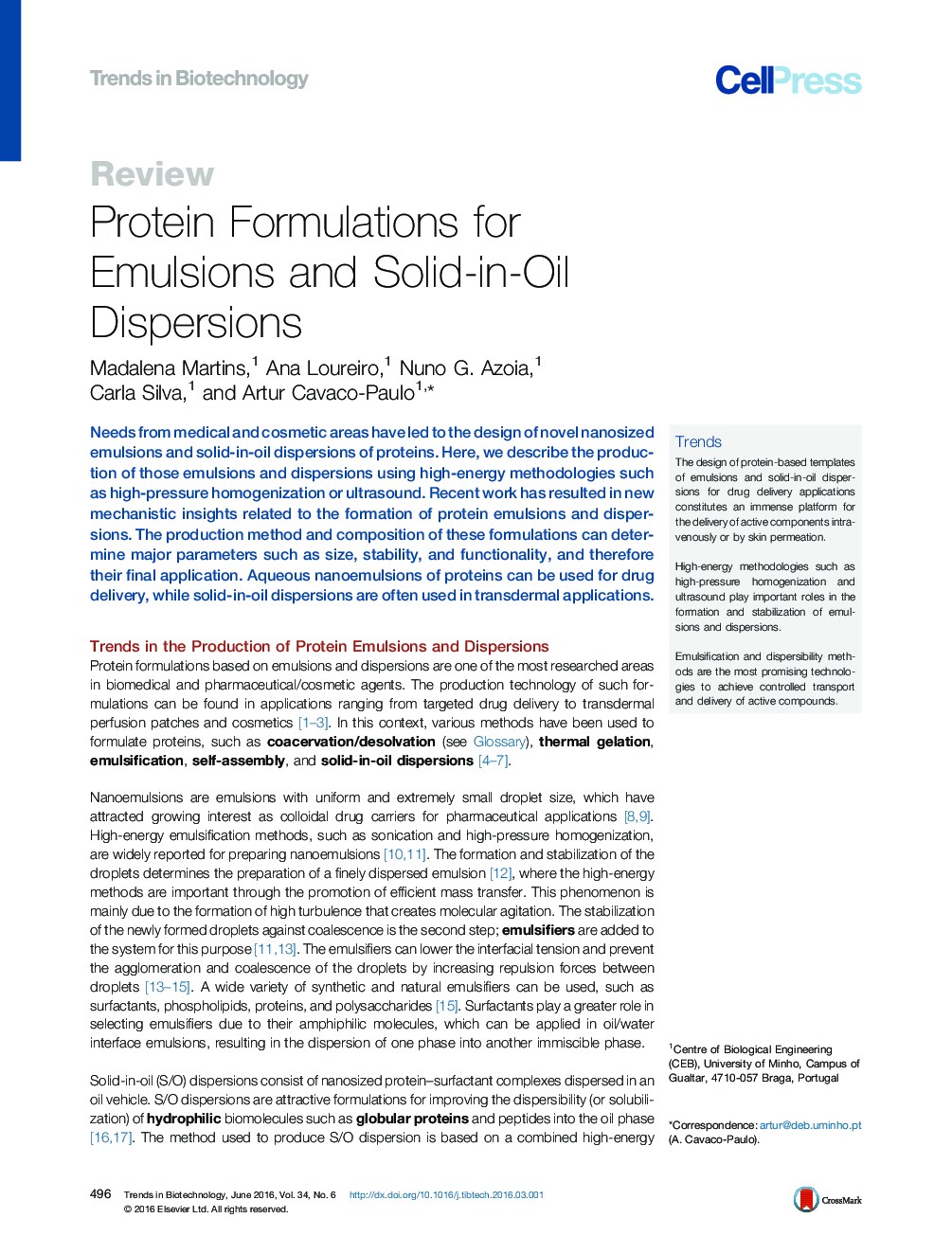| Article ID | Journal | Published Year | Pages | File Type |
|---|---|---|---|---|
| 36819 | Trends in Biotechnology | 2016 | 10 Pages |
Needs from medical and cosmetic areas have led to the design of novel nanosized emulsions and solid-in-oil dispersions of proteins. Here, we describe the production of those emulsions and dispersions using high-energy methodologies such as high-pressure homogenization or ultrasound. Recent work has resulted in new mechanistic insights related to the formation of protein emulsions and dispersions. The production method and composition of these formulations can determine major parameters such as size, stability, and functionality, and therefore their final application. Aqueous nanoemulsions of proteins can be used for drug delivery, while solid-in-oil dispersions are often used in transdermal applications.
TrendsThe design of protein-based templates of emulsions and solid-in-oil dispersions for drug delivery applications constitutes an immense platform for the delivery of active components intravenously or by skin permeation.High-energy methodologies such as high-pressure homogenization and ultrasound play important roles in the formation and stabilization of emulsions and dispersions.Emulsification and dispersibility methods are the most promising technologies to achieve controlled transport and delivery of active compounds.
